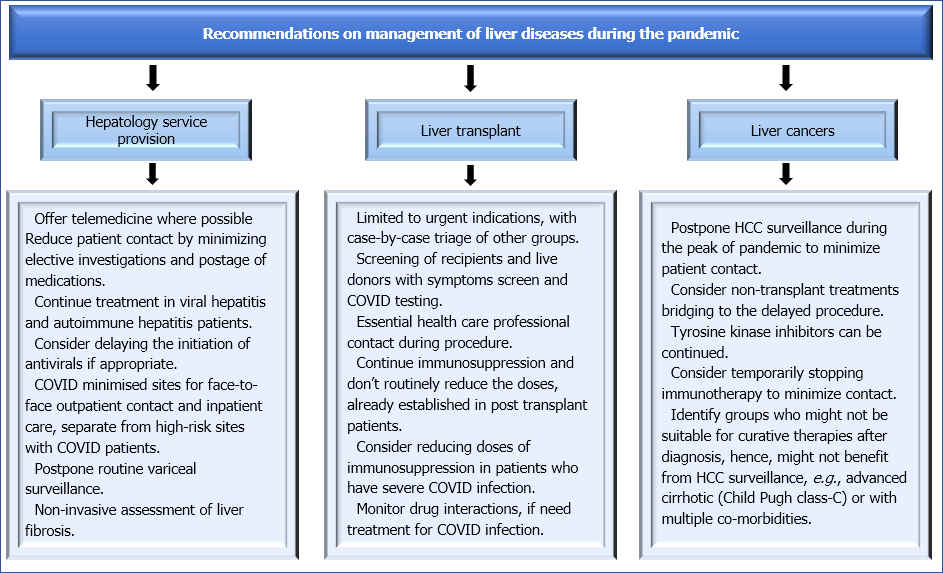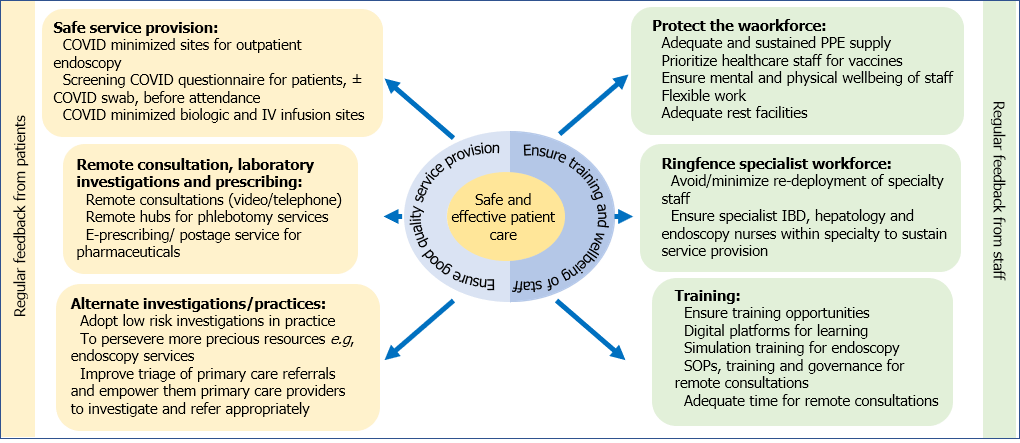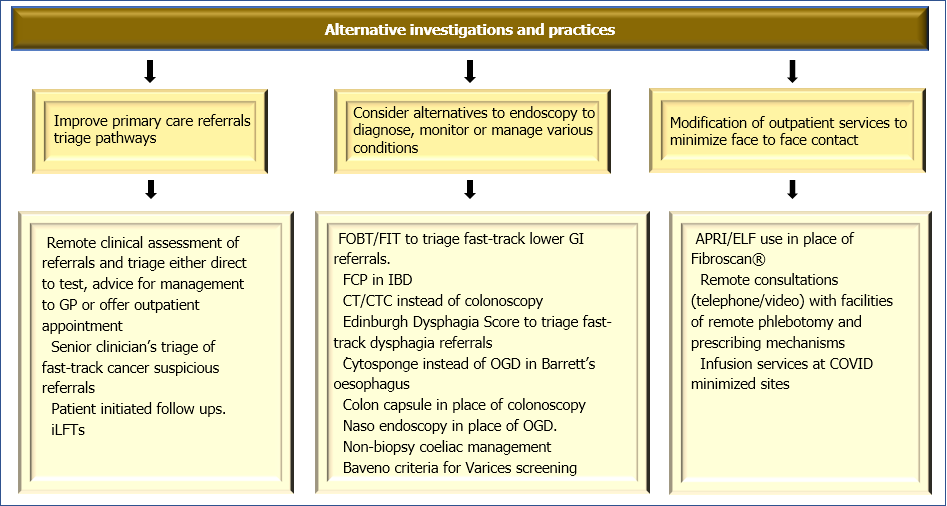Copyright
©The Author(s) 2021.
World J Gastroenterol. Nov 28, 2021; 27(44): 7625-7648
Published online Nov 28, 2021. doi: 10.3748/wjg.v27.i44.7625
Published online Nov 28, 2021. doi: 10.3748/wjg.v27.i44.7625
Figure 1 Reduction in United Kingdom wide endoscopic activity (cumulative number of procedures/week) during 1st peak of COVID-19 infections.
Source: United Kingdom’s National Endoscopy Database analysis, Rutter et al[42].
Figure 2 Summary of recommendations from major Hepatology societies across the world on management of liver diseases during the pandemic.
Sources: American Association for the Study of Liver Diseases[55]; British Society of Gastroenterology[9]; European Association for the Study of the Liver[56]; Indian Gastroenterology Society[21]; International Liver Transplantation Society[10]; Pan-Arab Association of Gastroenterology[54]. HCC: Hepatocellular carcinoma.
Figure 3 Recommendations for safe and effective care provision and continuation of training during Pandemic.
IBD: Inflammatory bowel disease; PPE: Personal protective equipment; SOP: Standard operating procedure.
Figure 4 Recommendations for exploring alternative investigations and practices during the pandemic.
FOBT: Faecal occult blood test; FIT: Faecal Immunochemical Test; FCP: Faecal Calprotectin; CTC: CT colonography; iLFT: intelligent liver function testing;APRI: aspartate aminotransferase to platelet ratio index; ELF: Enhanced Liver Fibrosis; OGD: Oesophagogastroduodenoscopy.
- Citation: Anjum MR, Chalmers J, Hamid R, Rajoriya N. COVID-19: Effect on gastroenterology and hepatology service provision and training: Lessons learnt and planning for the future. World J Gastroenterol 2021; 27(44): 7625-7648
- URL: https://www.wjgnet.com/1007-9327/full/v27/i44/7625.htm
- DOI: https://dx.doi.org/10.3748/wjg.v27.i44.7625












